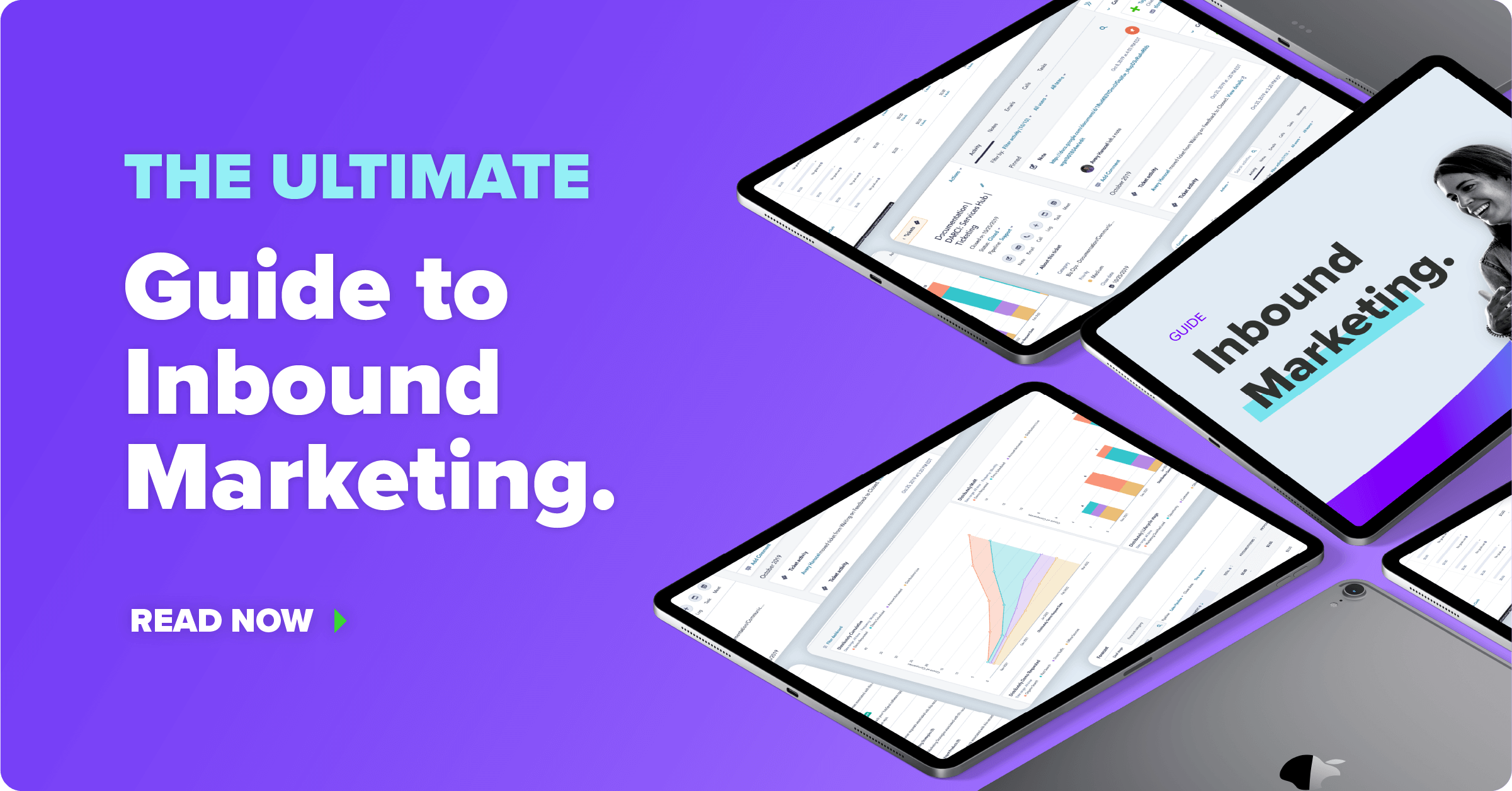7 Inbound Marketing Myths Debunked
Even though inbound has become an established methodology, there are still people out there who are doubtful of the value it can provide and are hesitant to adopt it.
Here are seven misconceptions you might have about inbound marketing and why they’re wrong:
1. Inbound is Only a Long-Term Strategy
While inbound is most impactful over the long term, there are also opportunities to get quick wins out of inbound.
Inbound isn’t just a way to attract new website visitors. It also governs how you nurture your existing leads and service your current customers. While you wait for tactics like blogging and SEO to gain traction, you can start applying the methodology to all your communications in order to increase conversion rates and improve customer experience.
As soon as you have content created you can start emailing it to contacts, and by targeting your outreach to their interests and pain points you’ll immediately start providing them with value. Additionally, through the right hashtags, you can see traction on social media within a month or two. Finally, highly-targeted paid advertising can drive almost instantaneous results.
2. Inbound and Paid Don’t Mix
Originally inbound was just a way to do marketing, but as it’s evolved into a larger methodology you can now apply it to other areas of your business. Additionally, tactics associated with outbound, like paid advertising, can be done using the inbound methodology.
If you’re serving the right message to the right people at the right time, then paid can fit in really well with the rest of your inbound strategy. You just need to understand your buyer personas, their buyer’s journey and where they spend time online.
For example, if you’re creating ads for paid search, take the intent behind the search term into account. If someone is searching for “business blogging tips” they’re most likely looking for something more educational to help them run a business blog. If you have an educational e-book full of actionable blogging advice, that’d be an appropriate thing to advertise for where they are in the buyer’s journey. On the other hand, advertising for your blog writing service wouldn’t align with what the searcher is seeking and could be seen as intrusive and outbound.
3. You Can’t Measure ROI from Inbound
Because almost everything you do as part of inbound marketing is digital, it’s easy to measure the ROI of your tactics as long as you have the right tools in place. Using marketing automation platforms, CRMs and analytics tools, it’s really easy to create a connection between a contact, the content they’ve interacted with and whether or not they became a customer.
Using that information, you can determine the cost of acquisition by calculating how much you spent attracting and nurturing that prospect. Then you can subtract the acquisition cost from the revenue gained during the sale in order to determine ROI.
Furthermore, since you can track every piece of content that was engaged with during the buying process, you can get more granular with your analysis and calculate ROI for specific channels and individual pieces of content.
So you can determine not just the ROI of your inbound as a whole, but get as granular as the ROI of an individual piece of content.
4. Inbound Marketers Don’t Help Sales Teams
When done correctly, the inbound approach creates alignment between marketing and sales teams.
Inbound marketing applies to every stage of the buyer’s journey, so it forces marketers to think beyond just how they can attract and convert leads to how they can support leads during the decision-making process once they’ve been passed on to sales.
Marketing materials like case studies can help sales teams build relationships with prospects, and assets like one-sheets can reinforce the information shared on calls and help prospects get buy-in from within their organization.
Operationally, inbound marketers help with qualification so sales is getting better-fit leads to begin with. Through form strategy and the use of buyer personas, marketers weed out poor-fit leads so sales doesn’t need to spend time on them, and inbound marketing enables sales to get more context about each prospect so they can conduct more informed outreach.
5. We Don’t Actually Need Buyer Personas
Buyer personas inform the ways you communicate with different types of prospects and help you ensure you’re going after the right leads. They should be created with input from across multiple teams at your company so that you can ensure they accurately reflect good-fit customers.
Not using buyer personas can lead to misalignment between teams, which can be detrimental to your company’s health.
For example, if your marketing, sales and product team all have different ideas of who your customers will be, you'll have difficulty closing deals and retaining the customers who do close. If marketing and sales aren’t unified about what leads are a good-fit, sales isn’t going to be able to properly follow up with the leads marketing passes on. If the product team doesn’t understand the needs of the customers sales is closing, they might not create the right support resources.
Buyer personas are essential for aligning your company around your customers so you can serve them to the best of your ability, which in turn generates your company the most revenue.
6. Inbound Marketers Spend All Their Time Blogging and Doing Social Media Which Doesn’t Help the Company’s Bottom Line
Blogging and social media do play an important role in inbound marketing and take up a significant portion of an inbound marketing team’s time. But, that’s not all they do.
Inbound also involves conversational marketing, email marketing, sales enablement, website conversion strategy, paid search, SEO, webinars and more.
The way they use all those tactics applies to all areas of the funnel. So inbound marketers don’t just focus on attracting website visitors and converting leads, they also nurture those leads and provide them with value throughout the buyer’s journey so they become satisfied, informed customers.
7. Inbound Won’t Work for My Company
Regardless of what industry you are in, your prospects use the internet, so you need to have an online presence in case they decide to seek you out. Even if you don’t need inbound for attracting and nurturing leads because people don’t research your solution online, prospects will still probably Google you before making a final decision. You don't want to not show up when someone looks you up — or worse, have your competitors show up instead
Most companies can benefit from educating prospects about the problem your product or service solves for, which is the premise of inbound. Even if you fall into a category that can’t, as long as there are other solutions on the market, inbound marketing will help you stand out and differentiate yourself.
For industries that operate primarily in-person, inbound can help you reach more markets and become more efficient. Again, inbound might not be the way you make initial contact, but it can help with nurturing, it can keep you at the top of prospects’ minds and it can improve sales’ win rates.
The Takeaway
Inbound marketing has proven to be extremely successful across industries, and its popularity is only growing.
As more and more of the buyer’s journey becomes digital and inbound becomes the status quo, not leveraging it will cause you to fall behind. In order to succeed as a company, you need to adapt to the needs of your customers, and inbound is the most customer-centric way to do marketing.
Quinn Kanner
Quinn is a writer and copyeditor whose work ranges from journalism to travel writing to inbound marketing content.





